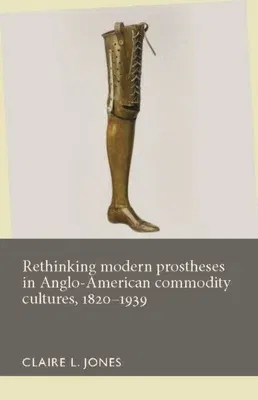Rethinking modern prostheses in Anglo-American commodity cultures, 1820-1939Hardcover, 26 April 2017

Qty
1
Turbo
Ships in 2 - 3 days
In Stock
Free Delivery
Cash on Delivery
15 Days
Free Returns
Secure Checkout

Part of Series
Disability History
Part of Series
Disability History Mup
Print Length
216 pages
Language
English
Publisher
Manchester University Press
Date Published
26 Apr 2017
ISBN-10
1526101424
ISBN-13
9781526101426
Description
Product Details
Book Format:
Hardcover
Country of Origin:
US
Date Published:
26 April 2017
Dimensions:
21.59 x
13.97 x
1.42 cm
Genre:
Physically Challenged
ISBN-10:
1526101424
ISBN-13:
9781526101426
Language:
English
Location:
Manchester
Pages:
216
Publisher:
Weight:
399.16 gm